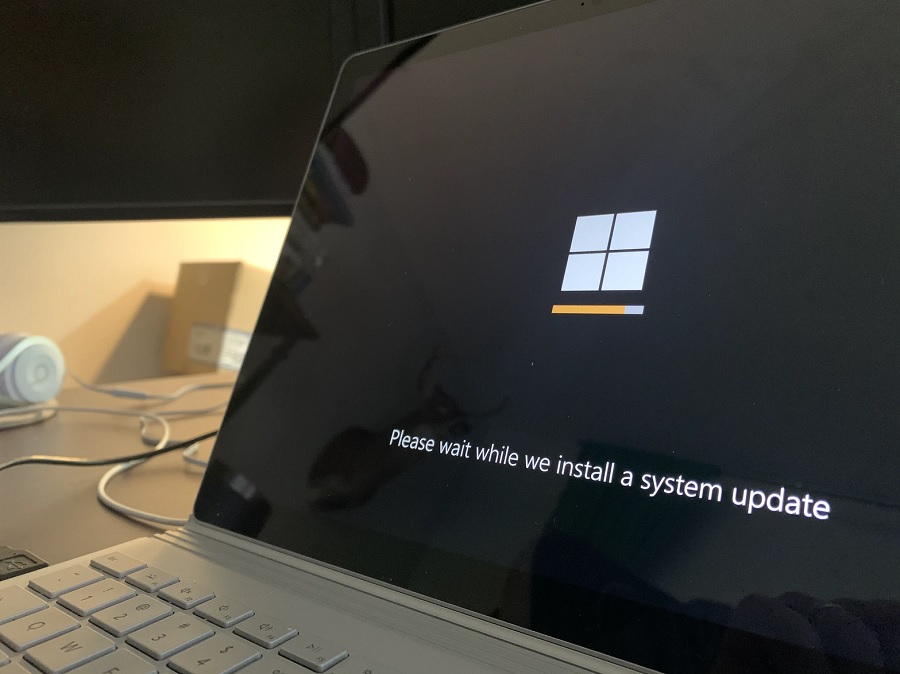The biggest operating system upgrade from Microsoft is coming in early October. The company has finally given a specific date when the Windows 11 update will start to roll out, however, many PC users may have to wait until 2022 to receive it.
Windows 11 release date
In a blog post on Tuesday, Windows Marketing general manager Aaron Woodman announced that the Windows 11 update will start to roll out on Tuesday, Oct. 5. But like most software updates, it will not be available at the same time for all users worldwide and the tech giant said it will use a “phased and measured approach” in delivering the OS upgrade.
“That means new eligible devices will be offered the upgrade first,” Woodman wrote. “The upgrade will then roll out over time to in-market devices based on intelligence models that consider hardware eligibility, reliability metrics, age of device and other factors that impact the upgrade experience.”
It is unlikely for Microsoft to come up with a specific timeline for all PCs from a long list of OEMs. However, the company promised that all devices eligible for a Windows 11 upgrade should receive the update by mid-2020.
Meanwhile, Microsoft said consumers do not have to wait until Oct. 5 to purchase a new laptop or PC. Most computers available in the market right now likely have the requirements to get the OS upgrade, so buying before or after Oct. 5 should not affect their eligibility for an update. Most importantly, Microsoft confirmed that the Windows 11 update will be free.
Windows 11 requirements
As of this writing, the originally announced system requirements for Windows 11 are mostly unchanged. A device needs a 64-bit processor or SoC with at least two cores and 1 GHz frequency. The update will require a minimum of 4GB RAM, 64GB storage, HD (720p) display, DirectX 12 with WDDM 2.0 driver, TPM version 2.0, and UEFI Secure Boot enabled firmware.
Most of this information can be viewed on Windows 10 devices by opening Settings > System > About. Another way to check is by clicking the Start button, then type “system information,” and open the System Information app. Windows users can also install the PC Health Check app that can automatically detect if a device has the needed specs for Windows 11.
Photo by Clint Patterson on Unsplash



 Intel’s Testing of China-Linked Chipmaking Tools Raises U.S. National Security Concerns
Intel’s Testing of China-Linked Chipmaking Tools Raises U.S. National Security Concerns  Trump Signs Executive Order to Establish National AI Regulation Standard
Trump Signs Executive Order to Establish National AI Regulation Standard  Apple App Store Injunction Largely Upheld as Appeals Court Rules on Epic Games Case
Apple App Store Injunction Largely Upheld as Appeals Court Rules on Epic Games Case  Microsoft Unveils Massive Global AI Investments, Prioritizing India’s Rapidly Growing Digital Market
Microsoft Unveils Massive Global AI Investments, Prioritizing India’s Rapidly Growing Digital Market  Australia’s Under-16 Social Media Ban Sparks Global Debate and Early Challenges
Australia’s Under-16 Social Media Ban Sparks Global Debate and Early Challenges  Taiwan Opposition Criticizes Plan to Block Chinese App Rednote Over Security Concerns
Taiwan Opposition Criticizes Plan to Block Chinese App Rednote Over Security Concerns  Moore Threads Stock Slides After Risk Warning Despite 600% Surge Since IPO
Moore Threads Stock Slides After Risk Warning Despite 600% Surge Since IPO  EssilorLuxottica Bets on AI-Powered Smart Glasses as Competition Intensifies
EssilorLuxottica Bets on AI-Powered Smart Glasses as Competition Intensifies  SpaceX Edges Toward Landmark IPO as Elon Musk Confirms Plans
SpaceX Edges Toward Landmark IPO as Elon Musk Confirms Plans  SpaceX Insider Share Sale Values Company Near $800 Billion Amid IPO Speculation
SpaceX Insider Share Sale Values Company Near $800 Billion Amid IPO Speculation  U.S. Greenlights Nvidia H200 Chip Exports to China With 25% Fee
U.S. Greenlights Nvidia H200 Chip Exports to China With 25% Fee  SK Hynix Labeled “Investment Warning Stock” After Extraordinary 200% Share Surge
SK Hynix Labeled “Investment Warning Stock” After Extraordinary 200% Share Surge  EU Court Cuts Intel Antitrust Fine to €237 Million Amid Long-Running AMD Dispute
EU Court Cuts Intel Antitrust Fine to €237 Million Amid Long-Running AMD Dispute  SK Hynix Considers U.S. ADR Listing to Boost Shareholder Value Amid Rising AI Chip Demand
SK Hynix Considers U.S. ADR Listing to Boost Shareholder Value Amid Rising AI Chip Demand  China Adds Domestic AI Chips to Government Procurement List as U.S. Considers Easing Nvidia Export Curbs
China Adds Domestic AI Chips to Government Procurement List as U.S. Considers Easing Nvidia Export Curbs  Adobe Strengthens AI Strategy Ahead of Q4 Earnings, Says Stifel
Adobe Strengthens AI Strategy Ahead of Q4 Earnings, Says Stifel 































